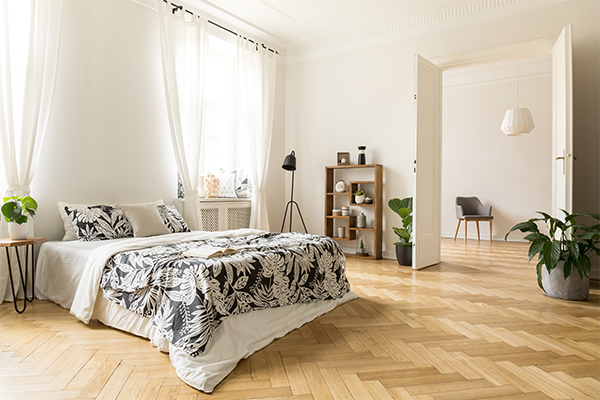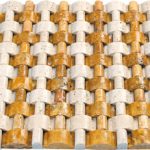When you go to price carpet, oftentimes you notice that the greatest expense is the installation. Installing carpet not only includes laying the carpet itself, but also some preparation work. This will include checking the sub-flooring and removing old carpet or flooring. Make sure you devote sufficient time for this as well as the installation.
The follow are the proper steps on how to install carpet.
1. Assemble your tools.
You may already have some of the tools you’ll need. These can include tape measure, stapler, materials for repairing sub-flooring, utility knife, chalk line, work gloves, eye protection and knee pads.
These are the tools you will need specifically for pad and carpet installation. You may need to rent or borrow these: tackless strips, carpet roller, knee kicker, power stretcher, seam tools and a stair tool.
2. Remove old carpet or floor covering, make any necessary repairs, and clean the sub-flooring thoroughly.
If removing old carpet, use cutting tools to cut the carpet into fairly wide strips. Take care not to cut into the sub-flooring, but cut deeply enough through the carpet and pad so that it can be rolled up and removed easily.
You’ll be able to tell the condition of the sub-flooring once you remove the old carpet. You’ll see any places where actual damage to the sub-flooring itself has occurred or where additional sanding or cleaning may be needed so that the new pad and carpet can be installed properly.
After making any needed repairs, you will need to thoroughly clean the sub-flooring so that no residue from the old flooring is left. Use scraping tools and other devices to remove old glue or carpet tape. Once this is done, the floor may only need a good sweeping or vacuuming to be ready for the next phase in your how to install carpet project.
3. Install the tackless strips.
Although they are called “tackless”, they still have two or more rows of tacks, so use caution when handling them. Tackless strips are installed along the walls, with the points facing inward. They are not installed in front of doorways, nor are they installed flush with the walls; rather, a space of approximately ½” should be left. The strips should fit tightly against one another in room corners.
4. Install the under pad.
The under pad is easier to install when it is in strips. Install them so that there is an overlap between the under pad strips and the tackless strips, and so that they are fitted as close to each other as possible without one strip overlapping the other one. Use the heavy-duty stapler to fasten the under pad to the inside edge of the tackless strip, then cutting tools to trim the excess under pad that is still lying over the tackless strips. Then use duct tape along all the seams.
5. Perform measurements and cuttings for the first piece of carpet
The first piece of carpet will need a 4” to 6” overlap all along the edge of the floor. Determine how big it will need to be by measuring the room at the longest point. Add 6” to the initial measurement figure. Turn the carpet over so that the back is facing you and determine the same measurement previously figured for both edges of the carpet. Use a chalk line to join the two marks. Fold the carpet over itself, and then use a straight edge ruler and utility knife to cut through the back of the carpet. Make sure something is placed underneath so that you won’t inadvertently cut through the carpet that is lying under the fold.
6. Working with seams
If a second piece of carpet is needed to cover the floor completely, complete the above measuring and cutting steps with the second piece. Make sure the designs on the carpet are matched up correctly. The other carpet pieces will not only have to overlap the walls by the same length as the first one did, they will also need to overlap the first piece by the same length.
Once the carpet has been cut, lay the two pieces with the seams fitted as tightly against one another as possible so as to determine where to apply the seaming tape. Once this is determined, remove the carpet pieces and lay a piece of seaming tape, adhesive side up, on the floor so that it is centered to where they will join. Use the seaming iron to activate the seaming tape adhesive.
After the seaming tape adhesive has been activated, lay the carpet pieces, again making sure the seams are as tight against each other as possible. Finish sealing the seam by rolling the carpet roller over the entire length of the seam.
7. Attaching the carpet
If you did not have to work with seams, you are ready to move on to attaching the carpet. Before using the knee kicker, remember that the teeth on one end that will grip the carpet are sharp, so use caution. Also remember that the knee kicker does require some force, but it should not be excessive.
Starting at a wall edge, position the kicker approximately 3” from the wall and push hard on the padded end. The carpet will be stretched over the tackless strip, thus being held firmly in place. Continue this process until all carpet has been attached to wall edges. [Diagram showing the proper use of a knee kicker.]
Now, position one end of the carpet stretcher against the wall where carpet has already been attached and the other end approximately 6” from the wall directly across the room. When the activation lever is operated, the stretcher teeth will grip the carpet so that it will stretch over the tackless strip that is on the opposite wall. [Diagram of a carpet stretcher being used.]
Continue to do this until all the carpet has been stretched. Then, use the utility knife or a wall trimming cutting tool to remove the excess carpet, and a stair tool to tuck the carpet into the gap between the tackless strips and wall.

















